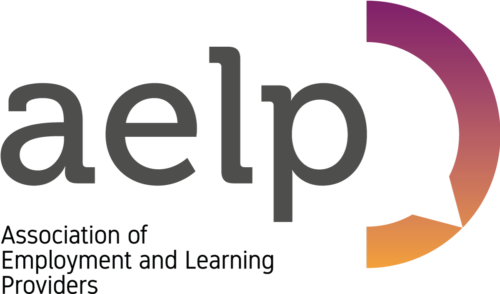AI in healthcare: navigating opportunities and challenges in digital communication PMC
Studies examining screening or diagnosis agents and treatment support agents had the highest average number of positive or mixed outcomes (mean 10, SD 0.6, and mean 9, SD 1.2, respectively). Treatment support agents had primary functions that included empowering patients to engage more fully in clinical appointments, encouraging attending screenings for health care conditions, and supporting patient self-management. In contrast, mental health agents focused on addressing challenges related to depression, anxiety, and alcohol abuse, among others.
Tables depicting the judgments for each question of the CASP cohort and qualitative checklists and the AXIS tool for the cross-sectional and other studies are included in Multimedia Appendices 6-9 [8,12,14,15,32,33,35,36,38-45,48,50-52,54-56]. First, we used IAB categories, classification parameters utilized by 42Matters; this relied on the correct classification of apps by 42Matters and might have resulted in the potential exclusion of relevant apps. Additionally, the use of healthbots in healthcare is a nascent field, and there is a limited amount of literature to compare our results. Furthermore, we were unable to extract data regarding the number of app downloads for the Apple iOS store, only the number of ratings.
Conversational AI is an advanced technology that facilitates human-like interactions between humans and bots. New and improved Artificial Intelligence (AI) techniques are the result of rapid growth in computing abilities that enable machines to learn with least human supervision. Particularly in the healthcare industry that is ripe with so many use cases of AI, there is significant headroom for growth.
Get a hands-on look at conversational AI in healthcare
This resulted in the drawback of not being able to fully understand the geographic distribution of healthbots across both stores. These data are not intended to quantify the penetration of healthbots globally, but are presented to highlight the broad global reach of such interventions. Another limitation stems from the fact that in-app purchases were not assessed; therefore, this review highlights features and functionality only of apps that are free to use.
Conversational AI solutions help track body weight, what and which medications to take, health goals that people are on course to meet, and so on. The choice of WhatsApp as a platform was a key factor in ensuring the wide reach of this solution, given that WhatsApp is the world’s largest messaging platform, with over 400 million users in India alone. The COVID-19 pandemic reinforced a lesson that we’ve always known but often forget – the only things that spread faster than infections during a healthcare crisis are misinformation and panic. But even during normal circumstances, inaccurate or false information about health or disease-related issues causes harm to individuals and communities.
Continue the conversation
Another systematic review investigated the outcome measures of the studies of conversational agents but limited the inclusion criteria to agents that used natural language input and had been tested with human participants [2]. Additionally, their initial database searches only retrieved 1531 articles, which raises the concern that some relevant articles may have been overlooked [2]. Their search was updated in February 2018, but given the rapid pace of technological development, there is a need to provide an update and expansion to these previous systematic reviews. Automation of these tasks could free clinicians to focus on more complex work and increase the accessibility to health care services for the public.
Conversational AI, on the other hand, allows patients to schedule their healthcare appointments seamlessly, and even reschedule or cancel them. As a result, AI innovation competes with other priorities, both inside and outside the health care sector. It is another example, I would argue, of how tech can have either a positive or negative impact, or none at all. AI is ready to make a positive impact conversational ai in healthcare in health care, Philips CEO Roy Jakobs told me last week in Davos, but people in charge of the health care system are holding it back. While AI-powered chatbots have been instrumental in transforming the healthcare landscape, their implementation and integration have many challenges. This section outlines the major limitations and hurdles in the deployment of AI chatbot solutions in healthcare.
As evident by the examples given, conversational agents can also handle a range of highly sensitive data. Hence, they need to be designed in a way that supports and guarantees patients’ privacy and data security. While the exchange of some patient data is indispensable to integrate data sources and communicate patient states to health care professionals, other data can be collected, processed, and stored on the patients’ local devices. While the goal of personalization is to create a more personal and customized relationship between patient and health care services, conversational agents can also offer the safety of anonymity [
11
]. Users will sometimes feel more comfortable interacting with an “anonymous” conversation agent compared to a healthcare professional [
54
]. Stigma and barriers to healthcare advice access can be significantly reduced, and that can then allow exploration of several challenging healthcare topics [
55
].
The past few years has seen even more innovations in Virtual Assistant that can automate and engage in human-like conversations with a user. These conversational AI systems have been applied to a number of industries including banking, retail, marketing and others. All studies retrieved from the databases were stored in the reference management software EndNote (version X9, Clarivate Analytics), which automatically eliminated duplicates. Due to time constraints, the EndNote search function was used to extract relevant studies before the screening of the citations against the inclusion and exclusion criteria by 2 independent reviewers.
It will also require multiple resources including project managers and developers from the vendor and the IT teams working together. This may not be possible if basic off-the-shelf solutions are preferred over a vendor with expertise. A more full-scale concierge system which integrates to multiple systems within the hospital, would require more resources and a longer timeline that extends in to months. Technologies like artificial intelligence and robotics are helping us progress to the healthcare of tomorrow.
The Power of Words: AI Helps Healthcare Professionals Choose Their Words Wisely – Managed Healthcare Executive
The Power of Words: AI Helps Healthcare Professionals Choose Their Words Wisely.
Posted: Thu, 05 Oct 2023 07:00:00 GMT [source]
The landscape of healthcare communication is undergoing a profound transformation in the digital age, and at the heart of this evolution are AI-powered chatbots. This mini-review delves into the role of AI chatbots in digital health, providing a detailed exploration of their applications, benefits, challenges, and future prospects. Our focus is on their versatile applications within healthcare, encompassing health information dissemination, appointment scheduling, medication management, remote patient monitoring, and emotional support services. However, it also addresses the significant challenges posed by the integration of AI tools into healthcare communication. When grouped by the agent’s health care scope, studies of certain types of agents appear to do better than others (Table 3).
Several recent review articles have described the scope of conversational agents in healthcare. Laranjo and colleagues identified 17 conversational agents with unconstrained natural language input capabilities in healthcare. They found that conversational agents in healthcare are still in the early stage compared to other fields [
31
]. Carr et al. updated the review and yielded 47 studies covering all types of conversational agents in healthcare, indicating a rising trend of studies in this field since 2016 [
32
]. This recent scoping review also found that about half of the identified agents were delivered via smartphone apps or smartphone-embedded software as the major delivery channels, followed by web-based chatbots.
If the existing systems are old, even simple file transfers could take hours or days. And in case of any system incompatibility, some additional rework might be required to ensure that the chatbot solution fits and is deployable. Healthcare institutions can be expected to have the necessary domain expertise inside their organisation for obvious reasons. However, they will still have to rely only the data sets that they have access to, in order to train the conversational AI. Empathetic – Just like in human to human conversations, it makes a big difference if the bot can put itself in the user’s shoes when responding. If the answers are too factual and devoid of any warmth, it may address the user’s queries but nothing more.
Tackling healthcare’s biggest burdens with generative AI
Once the patient explicitly grants the GP data access, the patient’s state can be inspected at any point in time using a data dashboard. In the case of deteriorating or ambiguous health conditions, the GP can take over the conversation and initiate a personal chat or phone call. Health will be a continuous conversation between patients, caretakers, and their data, facilitated by conversational agents.
For example, if the utterance “How do I file a claim for my medical insurance” is under the intent “Claim_Medical_Insurance”, the model should correctly point to this intent. When the user asks a question, it goes through the NLP engine or brain, which quickly processes how to return a response. If no response can be found, there is generally a fallback layer comprised of knowledge from FAQs. If even this stage does not produce a response, the bot passes the question back to a live agent. The consistent training of the bot by clearing conflicting responses and adding more examples is what makes it smarter and more intelligent over time. The platform should also have the functionality to improve the system and deliver business insights based on bot data analytics.
- Patients can easily book appointments, receive reminders, and even reschedule appointments through chatbot interactions (6).
- Specifically, there could be a big gap between the language of the user’s queries and the correct medical terms corresponding to those queries.
- Such chatbots are most widely deployed as their implementation does not require specific programming knowledge and is rather based on tools, such as Google’s
Dialogflow
[
17
].
- Without proper planning and execution, the adoption of Conversational AI in healthcare could create more problems than it solves.
- This variant provides a higher degree of customization and flexibility but requires a certain expertise and development resources.
The CASP (Critical Appraisal Skills Programme) tools for cohort and qualitative studies were used for the respective studies [29], and the Appraisal tool for Cross-Sectional Studies (AXIS) tool was used to assess the quality of cross-sectional survey studies [30]. Table 2 has retained the characteristics of the CAs (the categories defined in Box 1) that were evaluated in the included studies. In addition, it shows AI methods used, based on a list of keywords, defined from three systematic literature reviews for CAs in health care [1,6,27]. Section 2 presents methods explaining the search strategy, eligibility criteria, screening, and data extraction processes. Section 3 addresses the results that include descriptions of included studies, CAs, AI methods, and evaluation measures. Now, if NLP allows the system to understand and reply back in human language, machine learning, a set of techniques that enables machines to learn from past and current data, optimizes processes for more accurate results.
About a quarter of studies (8/30, 27%) had neither positive nor mixed reported evidence for more than half of the SF/HIT outcomes. The synthesis framework for the assessment of health information technology (SF/HIT) was used to structure the evaluation of the studies because it included a whole system set of outcome variables [31]. These included effectiveness, satisfaction, and perceived ease of use or usefulness, among others. In accordance with the framework, evidence for each of the outcome variables was coded as positive or mixed or neutral or negative. If the study did not address the outcome in question, it was coded as neutral or negative.
In contrast, people in Singapore generally try to book appointments and get checked up at their hospitals as soon as they start observing symptoms. The healthcare institutions in these regions therefore differ in their philosophy of care and therefore in their adopted clinical protocols. While the mechanisms by which they operate may be similar, the same conversational AI solution may not be applicable across diverse industries and uses cases. In the healthcare industry, there are specific challenges to address which will dictate how organisations go about implementing a virtual assistant.




